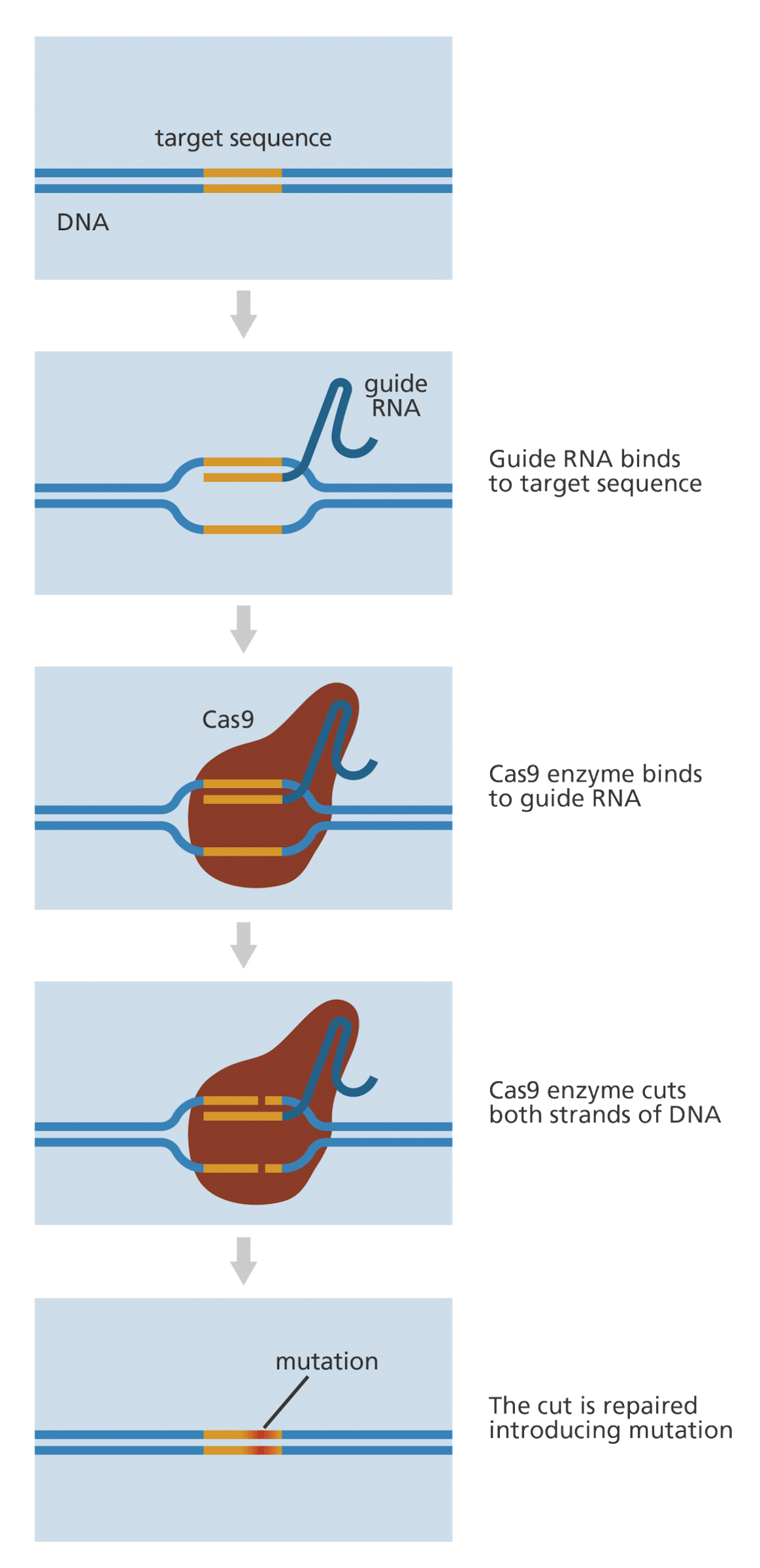TL;DR Science: CRISPR-Cas9
By Shang Chen
August 26, 2020 · 5 minute read
There are certain scientific discoveries that change the course of human history. Breakthroughs of this scale include the invention of penicillin to fight off bacteria or identifying the double helix structure of DNA. In 2012, another potentially revolutionary discovery was found by a research team headed by Emmanuelle Charpentier from Umea University and Jennifer Doudna from UC Berkeley (Go Bears!). This innovation in gene editing is named CRISPR-Cas9, and it may be the most significant discovery of our lifetime.
What is CRISPR-Cas9?
If you’ve never heard of CRISPR before, genetic engineering may sound more sci-fi than reality. Gene engineering centers around the idea of being able to edit sections of your DNA to bring about changes in a person’s physical composition, eye color, and even disease risk. After all, being able to pick your height, weight, and hair color seems more video game-esque than real life. However, with Clustered Regularly Interspaced Short Palindromic Repeat and CRISPR-associated protein 9 (a.k.a CRISPR-Cas9), we now can modify the human genome with newfound accuracy and speed.
CRISPR-Cas9 works by using a naturally occurring genome editing system found in many forms of bacteria. Within the bacteria, snippets of DNA are gathered from invading viruses to create what is known as CRISPR arrays. These arrays allow the bacteria to store information on foreign viruses. This means the next time the virus attacks, the bacteria can disable the virus by producing RNA segments from the CRISPR arrays to target and cut the attacking virus’s DNA threads. Essentially, the bacteria are disabling the attacking virus by destroying its genetic structure. Pretty cool, right?

Researchers have been able to use CRISPR for practical purposes by utilizing its gene splicing potential. Similar to how CRISPR allows bacteria to cut the DNA threads of attacking viruses, researchers are looking for ways to target specific DNA sequences in humans and animals, allowing them to remove undesirable strands of DNA and even replace them with their modified sequences. At this point, the potential of this level of genetic engineering should be evident. If we manage to further develop this technology, scientists believe that we may be able to completely eradicate single-gene diseases such as Cystic Fibrosis, Hemophilia, and Sickle Cell Disease and be on the path to tackling more complicated conditions like cancer and HIV. Scientists are also looking forward to using CRISPR in other areas besides medicine like agriculture to create more nutritious crops or in the field of environmental conservation to design more disease-resistant bark for trees.
If you’re still confused on what exactly CRISPR does or just want more information, tune into this TED Talk by one of the creators of CRISPR, Prof. Doudna:
CRISPR sounds amazing! What’s the next step?
While this innovation in gene-editing technology may hold immeasurable potential, there remains a severe and important ethical dilemma. For as long as humans have existed, DNA has been an unchangeable fact of life. We are born with a particular sequence of guanine, cytosine, adenine, and thymine bases, and they define who we are - at our most basic level. The discovery of CRISPR-Cas9 is threatening to change all of that by giving humans the power to mold not only ourselves but the world around us.
Never before have we had this level of power and, therefore, this level of responsibility. Who is to know how the smallest genetic modification will manifest itself in five, ten, or a hundred generations? Perhaps a seemingly harmless change to a few DNA sequences could lead to an utter disaster down the road. One of the biggest questions with more powerful genetic engineering is the sheer uncertainty it holds. As we venture into the unknown, it’s important not to be blinded by the sheer possibilities of CRISPR, but also carefully weigh the risks involved.
There are also concerns with who will actually benefit from genetic engineering if the technology becomes applicable to humans. While CRISPR is a relatively cheap form of genetic engineering, it is still by no means accessible for the vast majority of people. It is widely known today that lower-income people suffer from higher rates of illnesses like diabetes and heart disease. If the rich have access to disease preventing operations, while the poor are the ones that suffer the brunt of them, will genetic modifications really lead to a better future? These are questions that the researchers and proponents of genetic engineering will have to grapple with as CRISPR and similar technologies advance.
TLDR;
CRISPR-Cas9 is a gene-editing system initially found in bacteria that allows us to edit genetic sequences with newfound accuracy and precision. The upsides of CRISPR include helping us fight genetic diseases and create more disease-resistant crops. Possible dangers include unintended consequences of our modifications and potential inequity for who will have access to genetic modifications and who will not. Still, CRISPR stands to be one of the most significant discoveries of the 21st century, and we should all be excited about its applications in the decades to come.
Make sure to follow @SciTeens on Instagram and check out SciTeens.org to stay updated with all the useful resources and content we put out!
About the Author:
Shang Chen is on the executive team of SciTeens and is studying Data Science and Economics at UC Berkeley. His hobbies include working out, cooking, and being bad at chess. Feel free to reach out to him with comments, questions, and future article recommendations at Shang@SciTeens.org.
Sources:
https://ghr.nlm.nih.gov/primer/genomicresearch/genomeediting
https://www.yourgenome.org/facts/what-is-crispr-cas9
https://news.berkeley.edu/2017/02/15/how-crispr-works-and-what-it-can-do/
https://www.yourgenome.org/facts/what-is-crispr-cas9 (Image credit: Genome Research Limited.)
https://www.vox.com/2018/7/23/17594864/crispr-cas9-gene-editing
Did you enjoy this article?